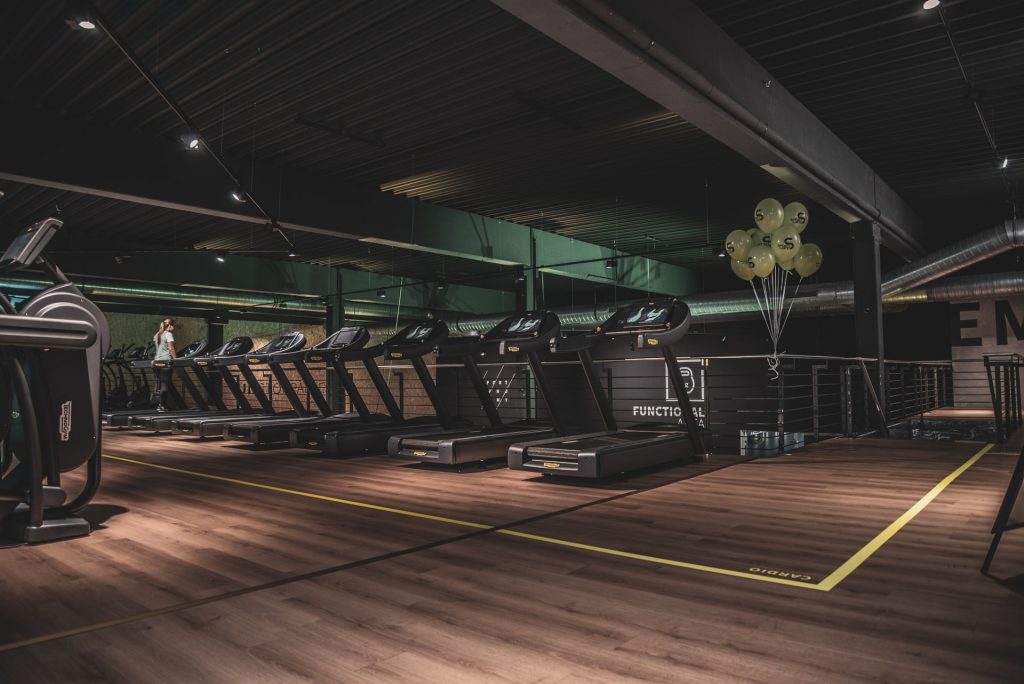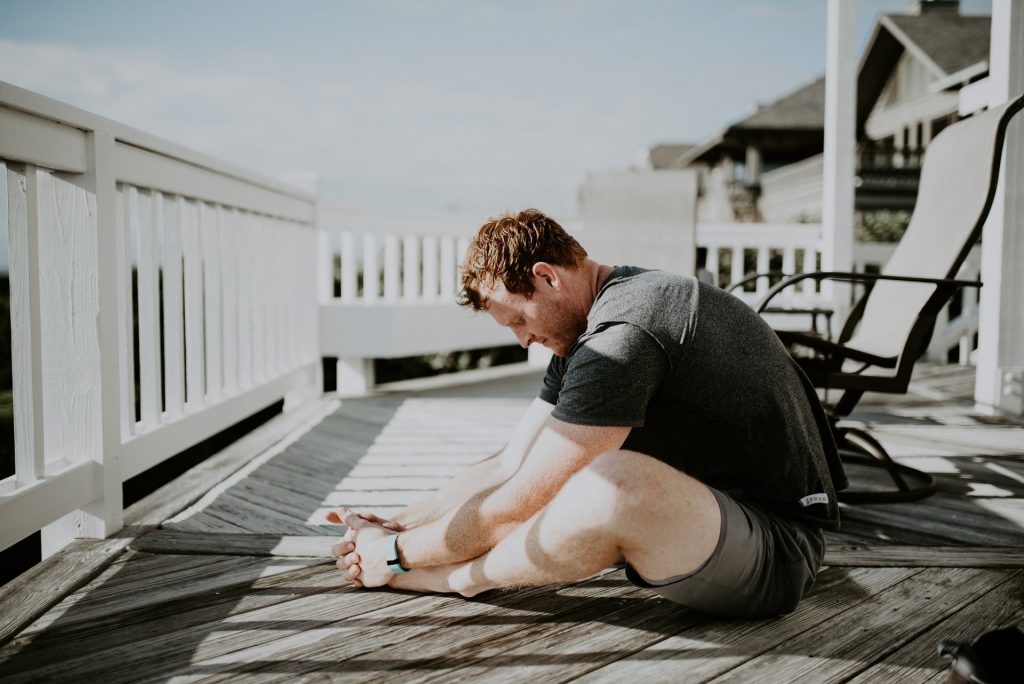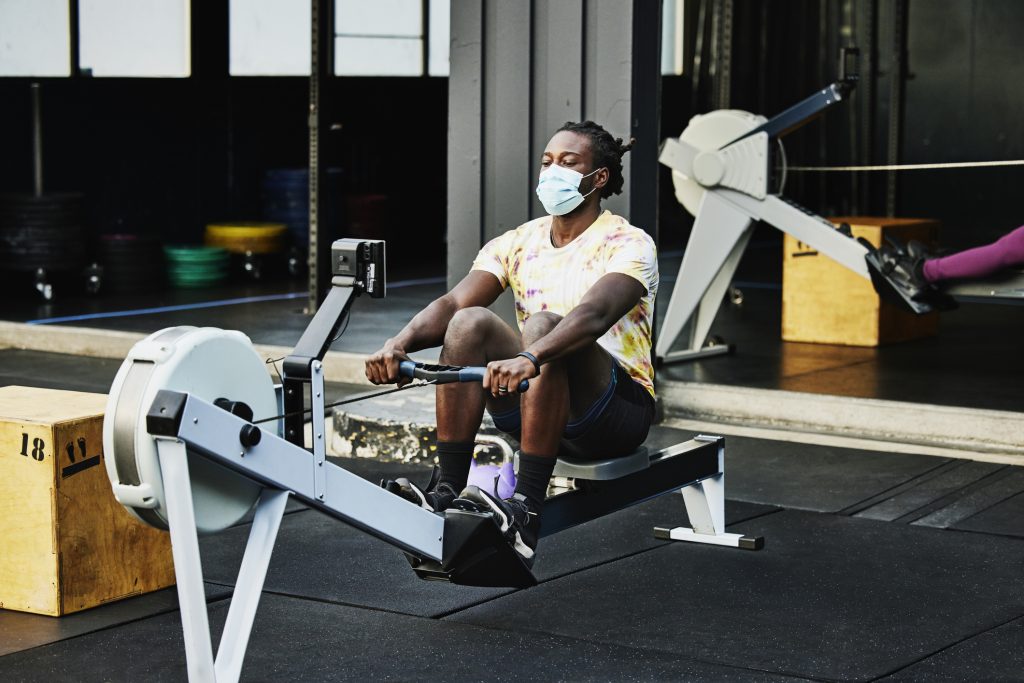When the pandemic hit, it put all of us into a state of universal uncertainty. At the center of the confusion was the lack of knowledge about how the virus spread. Warnings aired daily about keeping all surfaces germ-free, washing hands, quarantining grocery packages, cleaning food, and wearing masks. COVID-19 transmission through the air was considered a possibility. Other ways, not so much, but a “rather safe than sorry” philosophy drove the scientific precautions that medical experts asked us to apply. Social distancing was arguably the most used new term in 2020. Indoor activities were seen as highly risky, but outdoor activities were much safer — right? And crowds in either situation were out – even small groups were quite “iffy.”

The threat to the daily workout
In exploring the impact of the pandemic on gyms and health clubs, an informative Bloomberg overview offers a good starting point. The article highlights results of a recent survey and cites health club CEOs’ opinions, providing a valuable range of perspectives.
At the outset of the pandemic, virtually all of the medical experts agreed that health clubs and gyms posed a risk for disease transmission, likely through:
- Equipment stations placed a couple of feet apart
- Sweat flying in all directions
- Heavy huffing and puffing, spittle flying everywhere
- Poor ventilation and sanitization
- Group classes in confined spaces with all the above in play
In short, if you were looking to catch a dose of the virus with 100 percent certainty, a health club was the place to visit. Nonetheless, health club CEOs unanimously bemoaned the statewide shutdowns (starting in March 2020), which tanked class, instructional, and independent workouts by 85 percent. According to the fitness lobby group International Health, Racquet, and Sportsclub Association (HRSA), the fallout from the industry’s pandemic-induced downfall was nothing short of crippling. Consider the following: Job losses of 480,000, with revenues down by $15 billion.
In addition, 15 percent of all health clubs closed permanently, generating bankruptcy filings that embraced such names as:
- Gold’s Gym
- 24 Hour Fitness
- Town Sports International (and its offshoot New York Sports Clubs)
- Flywheel (closing every location)
The gym experience (GX, anyone?) couldn’t get more depressing. However, after a year (April 2021), things improved significantly. Still, despite the rejuvenation, workout participation levels ranged between 15 percent to 50 percent less than in 2019 (depending on the protocols followed by local authorities in opening things up).
In summary, the physical fitness industry went through one of the worst mandated business shutdowns in the country’s history. There was no way of avoiding it because it was an impossible dilemma where compromise solutions weren’t an option. As a result, the emphatic shutdowns even extended to mini health centers in HOA housing estates. Country club fitness centers were the only segment that weathered the pandemic fairly well.
Training in improvised home gyms quickly ramped up
Many of us bought Pelotons and Mirror with virtual fitness classes to bring professional training into our homes. Others acquired weights, pulleys, and mats, adjusting to regimens suited to their training style. Joggers and power walkers, more or less, carried on as they were, only with masks or on a treadmill. Many tailed off, doing far less or going sedentary.
Some new themes found extraordinary popularity in the COVID-19 shutdown, yoga being one of them. People shifting to the latter lauded its triple benefit of assisting mental and spiritual health alongside physical toning. Considering that the severe social restrictions thrust stress, frustration, and depression upon us, it’s not surprising. When you’re used to an active lifestyle and, suddenly, there’s nowhere to go but a few rooms in your house, it feels like the walls are closing in.

With the restrictions easing, what now?
It helps to appreciate that exercising for health and well-being is a $32 billion industry, but it’s not one undefined grouping. Instead, it’s a combination of segments that cover:
- Aerobic enthusiasts who love spin classes, treadmills, and elliptical trainers
- Body sculptors and weightlifters
- Stretching, palates, and yoga lovers
- Circuit training adherents
And the above include enthusiasts who exercise:
- Independently
- Privately with instruction
- In groups with organized classes
- Virtual workouts across all of the above (an incredibly popular new option)
In essence, the pandemic left us with a massively diversified gym experience and a behavioral segmentation that’s constantly evolving.
Light at the end of the tunnel
Of course, it’s easy to hammer home the dark side of a health crisis, but let’s review some silver linings:
- People across many industries moved into remote working mode – and loved it because it created more family and exercise time. Moreover, it eliminated driving to the office through rush hour traffic. The flexible hours were just what the doctor ordered for meditation or snatching 45 minutes on the bike (stationary or otherwise).
- From the company viewpoint, employers could also cut down on office leasing overhead and take advantage of freelancer services. The latter functions on paying for only what you need, with no vacation, paternity, health benefits, or end-of-year bonus.
According to the Bloomberg article (cited above):
- Radical shifts in commuting patterns and lingering virus fears (despite vaccine rollouts) kept on-premises workouts in doubt.
- Still, 75 percent of gym subscribers indicated they would return to traditional in-gym workouts. The significant jump in health club attendance from January 2021 bears this out.
- ClubIntel’s survey indicated that 57 percent of respondents cutting gyms out of their lifestyle confessed to a lack of confidence as the primary reason. They doubted that gym owners had hygiene and cleanliness under control.
- There’s no doubt that months of home workouts set up the virtual gym experience (VGX!) as a permanent contender, and there was no going back.
Today, traditional health clubs are in an intense battle with industry disruptors. For example, consider Apple’s rollout of a virtual fitness subscription service that’s live-streaming workouts (for as little as $80 annually). The juggernaut company calls it Fitness+ and it’s functional on all Apple devices and platforms. In 2019, only 7 percent of the target market responded to this option. By 2020, that figure had risen to 80 percent.
A hybrid gym experience
Yes, gym owners struggling to build back revenues cannot ignore consumers’ altered tastes. So, they’re delving into innovative ways of providing instruction through multimedia. As a result, hybrid programs mixing on-premises visitation with virtual options are becoming increasingly popular.
Now, on-demand and livestream group sessions are part of the gym experience equation, with 72 percent of club owners now offering these options, versus only 25 percent in 2019 (according to ClubIntel).

Conclusion
The impact of COVID-19 on gyms and health clubs is far from settled, and it remains to be seen how the landscape will look in three, six, or 12 months. Regardless, the best way for gym or health club managers or owners to get a handle on what members prefer is to utilize a well-constructed survey. And any gym is advised to implement a member experience program to better understand where things are headed. Don’t hesitate to reach out to Sogolytics for assistance.














